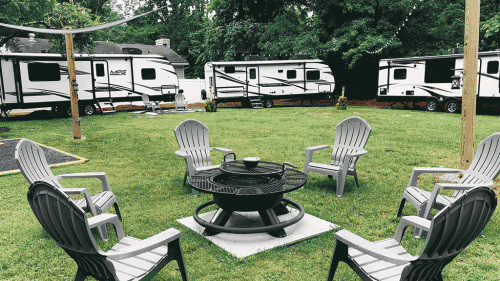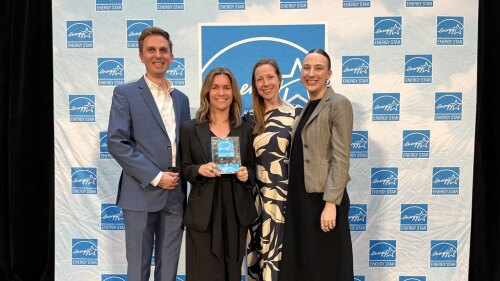Who would ever have thought that Walmart shoppers could sleep upstairs and shop downstairs, but that is exactly what residents of the building housing a new Walmart in downtown Washington, D.C., will be able to do. In December, Walmart opened its first two stores in the nation’s capital, and they illustrate the lengths to which brick-and-mortar retailers will go to get into rapidly growing urban markets. The 80,000-square-foot (7,400 sq m) store, built in partnership with JBG Rosenfeld Retail, is in a mixed-use building topped by four stories of apartments. Parking is located in a garage directly below the store. Another 10,000 square feet (929 sq m) of retail space is wrapped around the outside of the Walmart; initial tenants include a Starbucks and a bank.
The residential portion of the building contains 303 apartments, a fitness center, a lounge area, a roof deck, and a swimming pool. The store’s main entrance sits at sidewalk level, and shoppers use an escalator to reach the store level. The store offers more groceries than a typical Walmart, and traditional glass windows—a rarity for traditional big-box stores—let in daylight to illuminate the shopping floor.
Designed by MV+A Architects and the Preston Partnership, the H Street Walmart is a handsome urban building with traditional human-scale details, including cornices, individual multipane windows, an interesting corner feature at the main entrance, and a separate entrance for residents. It is a fully urban, pedestrian-friendly structure. Whether you love or loathe the company, this building proves that Walmart—one of the most recognizable symbols of modern suburbia—is going urban.
While the H Street, NW, store is by far the better of the two new urban Walmarts in the District of Columbia, the other new store on Georgia Avenue, NW, is also a significant departure from the retailer’s typical suburban store design. Built on the site of a former car dealership, the Georgia Avenue Walmart is a 100,000-square-foot (9,300 sq m) store on a four-acre (1.6 ha) site. Given the property’s size, the only way to build a large store was to eliminate surface parking and bring the store right up to the sidewalk. While the building is not mixed use, it does greet the street and represents a real evolution for Walmart. The company has announced plans to open several more stores—of varying design and levels of walkability—in the District.
The two things that have kept Walmart out of cities were its inflexibility on design issues and opposition from labor unions and civic activists who oppose the company because of its low wages and negative effect on existing local businesses. (In D.C., that activism was met with a mayoral veto of a wage-increase mandate.) Now that it appears that Walmart is willing—when pushed by local government—to adapt its stores to the urban environment, it is probably only a matter of time before the retail giant moves into cities elsewhere.
Another thing that is clear is that big boxes are getting smaller. The 80,000-square-foot (7,400 sq m) Walmart in D.C. is half the size of many suburban supercenters. What’s more, the retailer is creating new formats uniquely designed for cities. The new Walmart Neighborhood Market, for example, occupies only 40,000 square feet (3,700 sq m), and the Walmart Express stores measure just 15,000 square feet (1,400 sq m). The company has even opened two college stores, at Georgia Tech in Atlanta and at the University of Arkansas in Fayetteville. Each of these stores occupies less than 5,000 square feet (465 sq m).
Times have changed. The country’s largest retailers have saturated rural and suburban communities. The only remaining places with more spending power than available stores are in cities. One lesson learned from Walmart’s urban debut is that cities that want good design are going to have to demand it.
Edward T. McMahon is the Charles Fraser Chair for Sustainable Development and Environmental Policy and a senior resident fellow at ULI.








